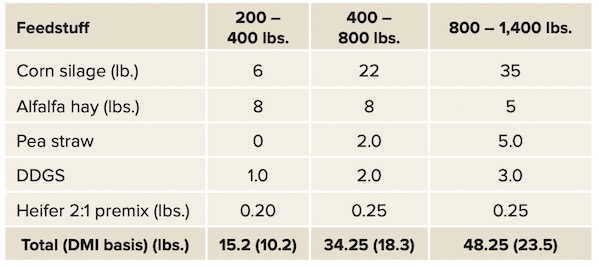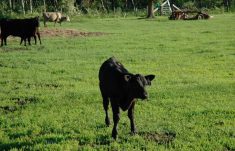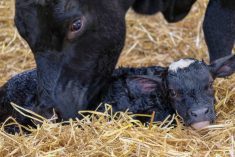Many dairy heifer replacements come out of the calf barn in good shape. That’s because many were fed milk and calf-starter diets that supported exceptional growth. Ironically, some of these heifers are not fed well after weaning, and this nutrition gap makes them struggle throughout their first lactation. Such adverse nutrition can largely be avoided with a little strategy as to what they really need to be fed as young stock in order to become future and profitable dairy cows.
As a dairy nutritionist, I advocate three objectives that are the foundation of most well-balanced replacement heifer diets fed through the next 20-22 months. They are:
- Promote and then maintain good dry matter intake of feed.
- Achieve a post-weaning heifer growth rate of 1.8-2.2 lbs.
- Body condition score of 3.0-3.5 (re: scale of 1 = emaciated and 5 = obese).
I worked with a 200-cow dairy manager who fed a heifer diet that was literally wet-barley silage mixed with a little protein/mineral concentrate. His newly post-weaned calves struggled with eating enough feed (under 2.5 per cent of body weight, DMI), which caused them to remain small by the time they were bred at 14 months. Once this producer realized his mistake, he correctly fed a new group of heifers a diet of nearly all mixed alfalfa-grass hay, and only would switch them over to a half hay/half silage TMR when they weighed at least 400 lbs. As a result, these new replacements reached a desired breeding weight of 750-800 lbs. at the same age as the previous struggling heifers.
A proper dry matter intake of well-balanced heifer replacement feed often dovetails into desired post-weaning growth rates of 1.8-2.0 lbs. per day, that increases to 2.0-2.2 lbs. after puberty at about 9-10 months of age. For those heifers that exceed these limits of gain, some of these heifers will become fat. That is why I advocate dairy producers monitor body condition scores (BCS) of all growing heifers at all stages of development.
All potential candidates for the future milk line should not deviate too much from a BCS of 3.0-3.5, because BCS mirrors how well dietary energy is matched to their post-weaning calf growth. This is particularly important when replacement heifers are getting ready for breeding (show strong estrus cycles) with target bodyweight of 750-800 lbs. and shoulder height of at least 48-49 inches.
As a case in point, a friend runs 300 dairy cow operation and achieves the above three goals by setting up three replacement TMR diets. And they do not exceed the accompanying dietary targets, namely: energy level of 66-69 per cent TDN (total digestible nutrients), 14-16 per cent protein and a complement of essential minerals and vitamins.
The first two post-wean diets support desired growth rates among the immediate post-weaned heifers (200-400 lbs.), and those young heifers to be bred at 13-15 months of age (400-800 lbs.). In the last diet, my friend pulls back the dietary specifications by 10-15 per cent to the post-bred animals (800-1,350 lbs.) in order to maintain their acceptable BCS until they calve and enter the milk line at 22-24 months.
These diets for these replacement heifers are illustrated in the accompanying table.

My friend’s diets are practical and can be reformulated when any particular situation arises. For example, his present 800-1,400 lb. group would not eat more than 30 lbs. of corn silage, so a couple of pounds of mixed hay and 0.5 lb. of DDGS were added to offset any dietary energy issues.
A while back, the 200-400 lb. calves looked a little fleshy for their age, so the producer decreased the amount of corn silage by three pounds and increased the mixed alfalfa hay by 1.5 lbs. He even considered adding pea straw, but did not want to challenge good dry matter feed intakes.
This demonstrates how well-balanced dairy replacement heifer diets should match the nutrient requirements of healthy and growing dairy heifers. These are the right kind of diets that should give them a head start on their first lactation and underlie many successful lactations yet to come.
















